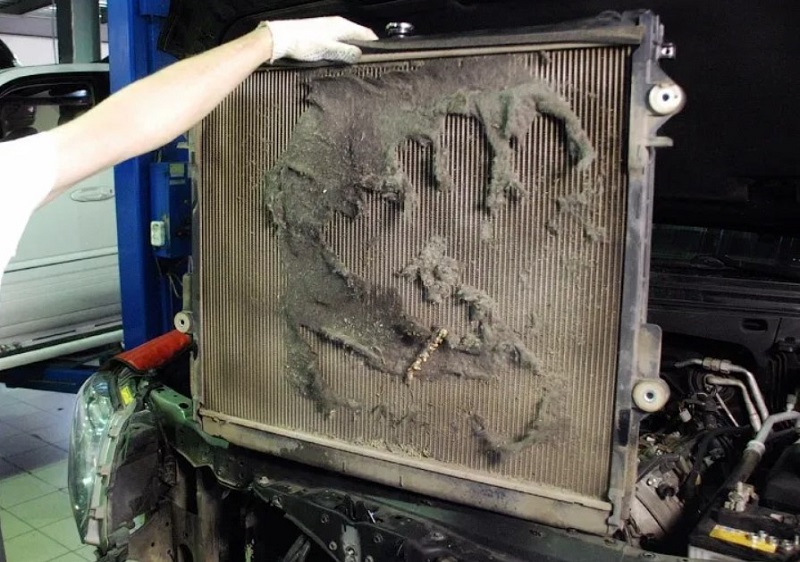As your car ages, as the miles begins to pile up, it pays to do a little more vehicle maintenance to keep the car running in tip-top condition. One of the maintenance tasks that will be of great benefit is to remove sludge, calcium, and lime deposits that have built up in your car’s radiator. Minerals, heat, and time allow these deposits to form. One of the simplest and least expensive ways to do this is by flushing the radiator using distilled white vinegar.
Why Mineral Deposits and Sludge Build Up
One of the leading reasons for roadside breakdowns is cooling system failure. Mineral deposits and sludge build up simply because anytime you combine metal with air and liquid, things will begin to degrade. Over time and miles, radiator coolant begins to lose its protective qualities, PH levels in the fluids change , and corrosion begins to set in. As corrosion sets in, rust, sludge, and limescale can build up throughout your vehicle’s cooling system. This can block the flow of air through the radiator and keep coolant from freely flowing around the engine, causing it to overheat.
Why Vinegar?
Vinegar has mild acidic properties. It typically consists of 4-7% acetic acid and 93-96% water, so it will remove scale without doing serious damage to any metal. It works in your coffee maker and it will work the same in your radiator. >>> Find Vinegar on Amazon
Flushing a Radiator With Vinegar: Step-by-Step
Step1: Always start with a cool engine. If the fluid in the radiator is hot or warm, it will have built up pressure inside the system and there is the possibility of being burned as you loosen the radiator cap. With the engine cool, place a pan under the petcock (drain plug) at the base of the radiator. Remove the radiator cap and then open the petcock to drain the radiator.
Step 2: Close the petcock, refill the radiator with fresh, clean water, and replace the radiator cap. Start the engine with the heater on and run it until the engine warms. Shut the engine off and allow everything to completely cool back down. Once everything is cool, drain the radiator again.

Step 3: Close the petcock and fill the system half full of water, then add one gallon of distilled white vinegar. After that, fill the radiator the rest of the way with water.
Step 4: Replace the radiator cap and start the engine. Once again, with the heater on, allow the engine to reach its normal operating temperature.
Step 5: Once the system has reached its operating temperature, turn the engine off and let the car sit for several hours (preferably overnight). This will allow the vinegar to do its thing.
Step 6: Once again drain the radiator. While it is draining, place a garden hose in the radiator at the cap and use fresh water to flush out any remaining vinegar water.
Step 7: Close the petcock and fill the radiator with the proper mixture of coolant and water. Replace the radiator cap. >>> Check Vinegar Options on Amazon
Conclusion
A clogged radiator can lead to engine overheating and leave you stranded on the side of the road. Other than operating your car’s engine without the correct amount of oil, overheating is the next quickest way to damage the engine. As metals overheat they can warp. A cylinder head can separate from the engine block, allowing head gaskets to fail. Pistons and cylinders can warp and cause a dramatic power decrease. The engine block can crack, which will more than likely require the entire engine to be replaced. You can buy expensive chemical cleaners to remove rust and sludge from your radiator, but it isn’t necessary. Distilled white vinegar will work just as well.
If you are a visual person, and would like to watch a few YouTube videos that explain this flushing process, these are good ones to watch:
White Vinegar vs. CLR for rust removal. The vinegar not only works better, it is less expensive. Although this test is not about flushing a radiator, you can see the power of the vinegar to remove rust.
